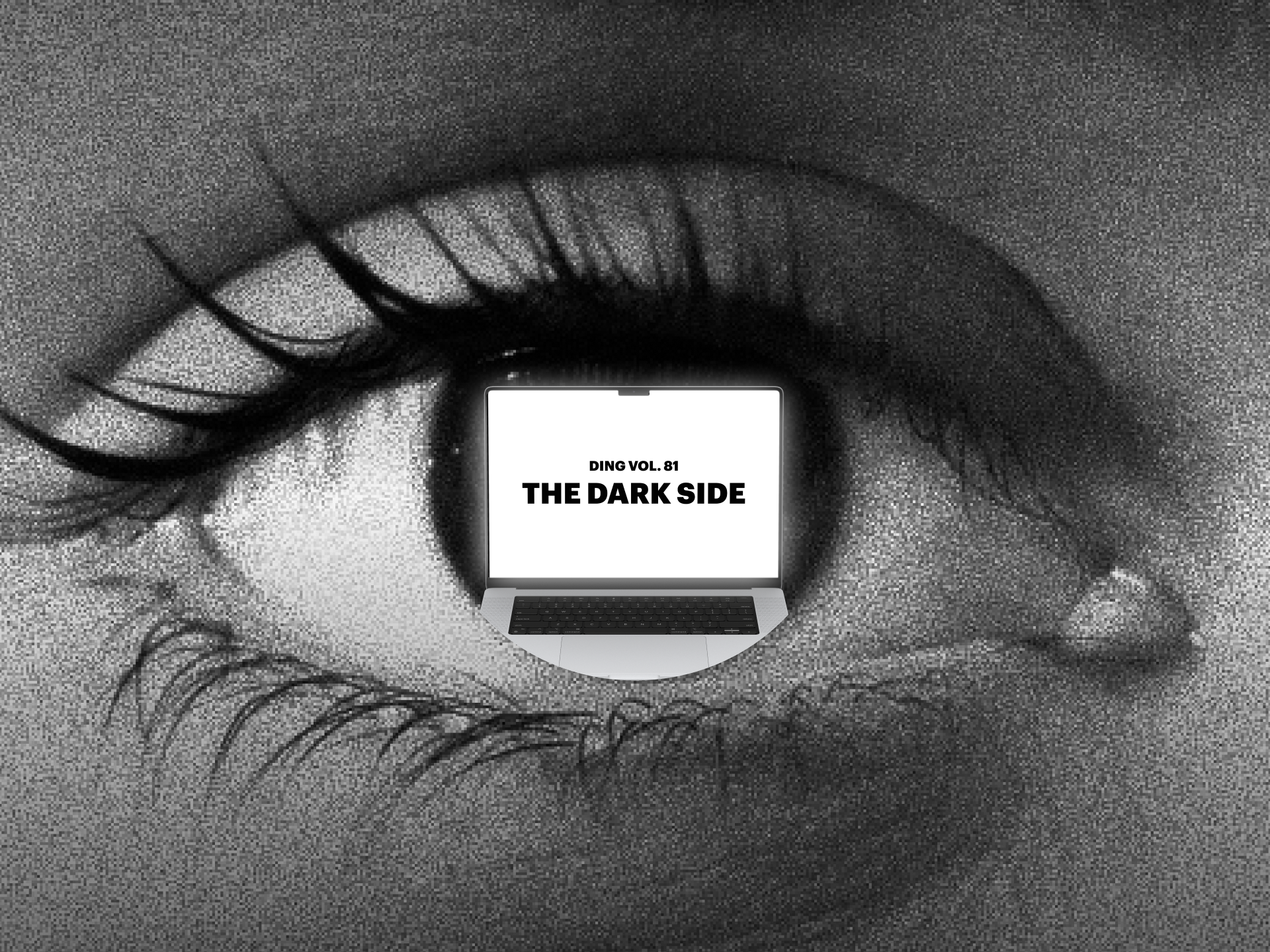The Dark Side
October 9, 2024
Welcome to the dark side, where your designs shine a little brighter. Dark mode is the sleek, casually rebellious cousin of the traditional bright, airy user interface. What started as a feature for night owls and developers burning the midnight oil has become a design staple for nearly everyone, especially the younger generation. If you’ve spent time on Twitter (now X), Instagram, or TikTok, you’ve probably noticed one thing, the platforms are catering more to their Gen Z audience with dark mode, and they’re not switching back anytime soon. And if you ask any of the gifted Gen Z designers at a small studio, all of them are permanently in dark mode across devices.
For designers, this shift isn’t just a trend, it’s a tectonic move in how we need to approach our craft.
Let’s explore why Gen Z has made dark mode their default and what brands should consider when deciding if it’s time to embrace the dark side.
Gen Z, the digital natives who were practically raised with a screen in hand, view dark mode as the norm. In fact, research shows that over 80% of Gen Z users stick to dark mode once they’ve switched, hardly looking back. But why?
- Eye Comfort and Health: Dark mode is easier on the eyes, especially in low-light settings. With Gen Z spending upwards of 10 hours a day across devices, the reduced strain dark mode offers can make a noticeable difference. The harsh glare of a white background can cause discomfort, especially at night, when many of us are doom-scrolling in bed (you know who you are).
- Aesthetic Appeal: Gen Z’s design tastes lean towards the sleek and minimal, and dark mode perfectly fits this aesthetic. It’s modern, understated, and in many ways, more visually striking than traditional light themes. The contrast of bright colors, bold typography, and vibrant images against a dark background creates an undeniably cool vibe.
- Battery Efficiency: Battery life is another practical reason why Gen Z sticks with dark mode. On OLED screens, which are common in newer smartphones, dark mode can actually save battery by turning off the pixels in black areas. For a generation that’s constantly on the go, saving those precious extra minutes of battery life is a big deal.
- Feels Personal and Customizable: Dark mode, to many Gen Z users, feels more personal. It’s not just about aesthetics or battery life; it’s about having control over their experience. Customization is key to this generation, and choosing dark mode feels like a way to make their devices their own.
For designers and brands, dark mode isn’t just a passing phase, it’s a fundamental shift in how we approach UI/UX design. But jumping on the dark mode bandwagon isn’t as simple as flipping a color palette. Dark mode comes with its own set of challenges and opportunities.
In dark mode, contrast becomes the main player. Colors that pop on a light background can feel muted or muddy on a dark canvas. High contrast is essential for readability and accessibility, but it’s also key to making sure your designs remain visually striking. Consider how your brand colors interact with dark backgrounds.
If your palette relies heavily on dark tones, you may need to introduce lighter, brighter accents to maintain balance.
Certain colors, particularly mid-tones like grays and muted pastels, can lose their punch in dark mode. What might appear sleek and minimal in light mode can look dull and flat when placed against a dark background. Test your designs across light and dark modes to ensure your visuals don’t lose their impact.
Light-colored text on a dark background can feel like it’s jumping off the screen, which is great for making a bold statement, but it can quickly become overwhelming if not handled carefully. Go too light with the font weight, and readability suffers. Go too heavy, and the design feels clunky.
Brands must strike the right balance in font weight and size to ensure text is readable and visually appealing.
In light mode, subtle shadows and gradients can add depth and nuance to a design. But in dark mode, these elements often disappear or feel out of place. Designers need to focus on flat designs, bold lines, and clean layouts to make the most out of dark mode. Depth is created more through contrast than visual effects like shadows.
Should Your Brand Go Dark?Now comes the million-dollar question: should your brand fully embrace dark mode? The answer is more nuanced than you might think.
- Know Your Audience: Gen Z? Absolutely. If your brand is targeting younger, tech-savvy users, dark mode should definitely be on your radar. This generation not only prefers dark mode, they expect it. In fact, brands that don’t offer dark mode options can seem outdated or out of touch with their preferences.
- Consider the Experience: If your brand’s app or website involves long reading times or intensive visual engagement (think news apps, social media, or e-commerce platforms), dark mode can enhance user comfort and extend their browsing session. However, for brands that rely on highly detailed or brightly colored visuals, like fashion or food, you might need to carefully tweak your dark mode design to maintain vibrancy.
- Think About Your Brand Identity: Not all brands are a natural fit for dark mode. If your brand identity is rooted in light, bright, and airy aesthetics, fully embracing dark mode could feel inauthentic. However, offering it as an option, rather than the default, can be a way to please dark mode lovers without compromising your core brand look.
- Test, Adapt, and Test Again: The best designs are flexible. Just as we design responsive layouts for different devices, we need to design for different modes. That means testing your brand’s visual identity in both light and dark modes and adapting accordingly. The goal isn’t to create two separate experiences but a cohesive one that works seamlessly across both environments.
Dark mode is a shift in user behavior, and it’s here to stay.
Understanding why Gen Z has made dark mode their default for brands and designers is crucial in adapting your design strategy. Dark mode offers a way to create bold, modern experiences, but it also requires thoughtful execution to ensure your brand’s identity and message shine through.
As with any design decision, the key is balance. The dark side can be sleek, chic, and incredibly cool, but only if it’s done right. Just like Gen Z has chosen to stick with dark mode, your brand can thrive in it too with the right approach. You can know more about the Gen Z vibe, from our last article.
Ready to take your brand to the dark side with authenticity? We specialize in crafting experiences that work in light and the dark. Let’s start some small talk about a digital identity that shines, no matter the mode.



